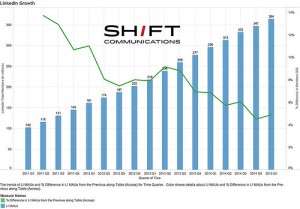Bounced emails are a subject matter of worry for the email marketers! Marketers need to know that bounces cannot be eliminated altogether and can rather just be reduced. A bounce rate between 10 to 20% is generally considered as acceptable. A gradual improvement on the email bounce rate is a must for better email metrics thereby!
What is a bounced email?
Email sent back to the sender due to delivery failures out of any reasons is called a bounced email. The various reasons behind such a delivery failure are put to use to determine whether it was one of the two email bounce types: a soft email bounce or a hard email bounce.
What can possibly make your emails bounce?
Soft bounces are governed by uncontrollable factors as they are all dependent upon the recipient’s email settings, inundated inbox, etc. Your high email bounce rates could be a result of host of reasons. Monks bring you 6 reasons to understand email bounces better and manage them:
- Rusting email databases & Invalid addresses Email Lists with low list hygiene can be the first threat pointing towards email bounces. Continued decay of email lists over time due to employee churn in companies arising out of the shrink and swell business situations can cause your email to bounce, making list hygiene of paramount importance. Also, if you do not send out email campaigns often, chances are that your email list would already be rusted before your next email blast.
- Temporary Delivery FailuresTemporary email delivery failure as a result of a full inbox or an email of a very large size is entirely possible. Based on these reasons of delivery failure, email services distinguish them as hard or soft bounces. Sometimes, an un-established communication or a recipient who is travelling is enough to cause a temporary email delivery failure. At the same time, some ESPs are better off at distinguishing between hard and soft bounces, and determine sender score accordingly but not all do!
- Blacklisted IP Ranges ISP gateways would not approve of any emails going through a blacklisted IP or domain which can decimate your email marketing returns. Also, if you are using a shared IP with a business that is into spammy email sending behavior, chances are that the IP gets blacklisted. As a result, every email you send from the blacklisted IP causes your email to bounce. IPs are checked against repeat offenders and hence it is only advisable to stay miles away from blacklists.
- Aggressive Spam Filters Evolving industry standards with improved algorithms to protect recipients from SPAM sometimes can consider a legit email too as spam, causing it to bounce. The ever changing DMARC specifications to protect against email spoofing could be one of the reasons too, owing to the email hack attacks that have started to emerge lately. Aggressive spam filters consider huge volume of identical incoming email as signs of spam and can shoot up your spam rates, ultimately causing your emails to bounce.
- Sender Reputation Your sender reputation is highly governed by sender score which determines email acceptance by an ISP depending upon a variety of factors related to domain or IP Address. Sender score mainly depends upon email relevance as the spam filters determine the sender score on the basis of how relevant you are in what you serve to your recipients. A poor sender score can cause your emails to bounce. Tools such as Return path’s Sender Score, etc. can help you learn your sender score to let you exactly know what has to be worked upon for reduced email bonces.
Hence, the reasons listed above that can possible cause your emails to bounce are manageable with consistent email sending divine practices encircling all the aspects of email sending reputation. A reduced email bounce rate can fetch your domain reputation a remarkable difference, if well and consistently taken care of.
(253)








